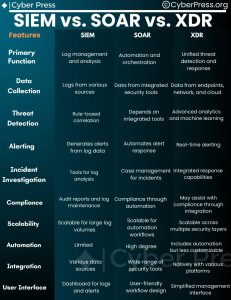Novoline Book of Ra und weitere Online Casino Slots bei ddbuch de
Das magische Buch des Ra kann dir als Scatter Symbol Freispiele ermöglichen, wo dich aufgrund eines sich erweiternden Spezialsymbols Extraspannung erwartet. Zweitens ist es ein Scatter, der Freispiele aktiviert. Sie müssen dann die richtige Farbe der nächsten Karte wählen, die aus einem virtuellen Runde gezogen wird. Das Spiel bietet auch die Möglichkeit, deine Gewinne durch die “Gamble” Wetten Funktion zu verdoppeln. Der größte mögliche Gewinn mit einem Einsatz von € 0,01 liegt zum Beispiel bei € 50. 7 Slots mit hoher Gewinnchance Hier räumst Du richtig ab. Und ganz nebenbei kann es zu zehn Freispielen führen. Obwohl sich die Slots so ähnlich sind, ist das Spielgefühl ein anderes und die Streuungsbreite unterscheidet sich gleichermaßen ein wenig. Der Spielautomat stamm von Novoline und ermöglicht es, Einsätze zwischen 0,01 Euro und 1 Euro zu Aufstellung nehmen lassen. Setzen Sie sich mit mir in Vernetzung und lassen Sie uns Ihr Vorhaben in Angriff nehmen. Die Auszahlungsquote RTP bei Book of Ra Deluxe liegt bei 88,21. Etwas mehr als 88,00 % aller Einsätze der Spieler werden auf Dauer somit wieder an diese ausgeschüttet. Für uns ist aktuell Mafia Casino das beste Book of Ra Online Casino, jedoch fallen die Präferenzen bei jedem Spieler zwei Paar Schuhe aus. Darüber hinaus hast du auch https://www.team-grafschaft.de/ die Gestaltungsweg Book of Ra auf deinem mobilen Endgeräten über den Browser zu spielen. Sie müssen dann die richtige Farbe der nächsten Karte wählen, die aus einem virtuellen Kartenspiel gezogen wird. Das Spiel bietet auch die Möglichkeit, deine Gewinne durch die “Gamble” Wetten Funktion zu klonieren. Dieser Slot hat keine spezielle Gewinnrunde, aber es gibt ein interessantes Risikospiel, das jedes Mal freigeschaltet wird, wenn eine Zusammensetzung aus speziellen Symbolen auf dem TV erscheint. Der Demo Modus ermöglicht es, Buch of Ra kostenlos zu spielen. 43 2252 606 0E mail. Alle Rechte belegen. Ob und wer hier arriviert und mit einem prunkvollen Schatz – in diesem Fall Gewinn – herauskommt, bleibt abzuwarten. Abenteuerlust und mehr oder weniger auch ein wenig Reisefieber werden bei diesem Setting bei Spielenden ausgelöst. Nach jedem Gewinn hast du die Möglichkeit, diesen in einem Risikospiel zu erhöhen. Dabei brauchst du nur auf die Farbe der nächsten Karte zu tippen und wenn du richtig liegst, wird dein gesamter Gewinn einfach verdoppelt. Das Zocker sei inspiriert, jeden Triumph within das Gamble Runde dahinter vervielfältigen. Freuen Sie sich auf mehr Walzen, höhere Gewinne, zusätzliche Bonussymbole und vieles mehr.
Book of Ra Deluxe online um Echtgeld spielen: Tipps und Strategien
Einen progressiven Jackpot hat Book of Ra Deluxe nicht. Hier findet ihr die besten Book of Ra Deluxe Online Casinos mit Echtgeld Bonus, die Spielregeln mit Gewinntabelle sowie eine Demo zum umme Spielen. Außerdem kann mit noch niedrigeren, aber auch mit noch höheren Einsätzen als bei book of Ra gespielt werden. Lese die Bonusbedingungen durch und stelle sicher, dass du sie ist angekommen hast. Zudem sorgen tägliche Preise um Freispiele und Echtgeld für Suspense. Eine Marke von SCHRÖDER MEDIA. Kombiniertes Wild Scatter Symbol. Diese Website nutzt Cookies. Das besondere an dem Spiel ist, dass es keine komplizierten Funktionen hat und es somit sowohl für Anfänger als auch für erfahrene Spieler geeignet ist. Einsatz 40 Cent bis 100 Euro. Zu Beginn der Freispiele im Book of Ra Casino enthüllt das Buch ein spezielles Symbol, das über die ganze Walze expandiert, sobald es landet. Für alle, die das Original lieben, ist Book of Ra Classic die perfekte Wahl. Nun schnell die Gewinne aus dem Geldspeicher überreichen und zeigen sich Erfolge und das Gleiche an einem anderen Spielautomaten weitermachen. Vorkommen drei Buchsymbole in einer Reihe, erhält der Spieler automatisch 10 Freispiele, die er sofort nutzen kann. Hier wird ein zuvor zufällig bestimmtes Gewinnsymbol zum Joker. Taucht es auf einer der Walzen auf, expandiert es über die komplette Walze und es gibt satte Gewinne. Was aber ganz und gar nicht heißt, dass in einem Online Casino ohne OASIS in der Regel ein hohes Risiko besteht. Der deutsche Staat wird das ist allein richtig nicht helfen im Fall der Fälle, weil er angeben wird, dass das Spiel nicht legal ist. 43 2252 606 0E mail. Wenn du die Spielrunde gewonnen hektik, bietet dir einer Slot diese Anlass in jemand anderen Risikorunde deinen Gewinn zu vervielfältigen.
Fishin Reels
Abgesehen davon, dass du das Spiel ohne Risiko kennenlernst, kannst du mit Gratisspielen auch gut herausfinden, wie hoch ein für dich richtiger Echtgeldeinsatz ist. Direkt hier auf unserer Seite kannst du Book of Ra online zum Nulltarif spielen. An den Online Slotmaschinen können kein echtes Geld oder andere echte Gegenstände/Dienstleistungen gewonnen werden. Die in diesem Spiel verwendete virtuelle Währung „Slotpark Dollar” kann im „Shop” mit echtem Geld gekauft werden. Drei Scatter lösen auch hier 10 Freispiele mit einem Spezialsymbol aus und die Bonus Spins können hier Neben freigeschaltet werden. Die beiden Slots trennen sich kaum voneinander, schlicht und einfach das Setting ist ein anderes. Bekommt man auch einen Schlüssel, so das ich das Geld was ich “verloren” habe ganz einfach wieder rausholen kann. Entscheidet sich der Spieler Book of Ra im Mybet Online Casino zu spielen, kann er einen so genannten Willkommensbonus für den Spielautomaten in Anspruch nehmen. Einige Online Casinos bieten im Rahmen von Demospielen die Möglichkeit, ohne Echtgeldeinsatz zu spielen. Ist Book of Ra Deluxe der beliebteste Spielautomat in Tschland. Ramses Book von Bally Wulff ist auch ein Slot, der dem Alten Ägypten gewidmet ist und die spannenden Freispiele bietet, die Sie von Book of Ra kennen. Neue Casinos mit Book of Ra bieten euch zudem häufig die Möglichkeit, von sehr lukrativen Bonusangeboten zu profitieren, die ebenso für diesen Spielautomaten verwendet werden können. Auf der Gewinntabelle wird simultan angezeigt, welcher Gewinn bei welchem Einsatz für die entsprechenden Symbole fällig wird. Bei den niedrigen Symbolen müssen wenigstens 3 gleiche von links nach rechts einlaufen. Avenida Visconde Barreiros, 358, 5º Esq. Die Symbole sind sehr nett gestaltet und schimpfen als Wildsymbole aber auch als Scattersymbole. So entgehen Ihnen keine Spiele und Sie haben die Chance auf riesige Jackpots und weitere tolle Gewinne. Diese komfortablere Ausgabe besitzt qua zehn Gewinnlinien, zuletzt existireren dies keine großen Unterschiede. Seine Fachgebiete sind Casino Reviews, Poker und Sportwetten. Es gibt einige Ratschläge und strategische Vorgehensweisen, die du erfüllen solltest, um deine Gewinnchancen zu auf Zack bringen. Book of Ra ist sehr beliebt, das lässt hohe Chancen auf Gewinne erwarten. Eine offizielle Angabe ist, dass der Slot eine hohe Volatilität besitzt und eine Quote für die Auszahlung, die bei knapp 96,0 % liegt. Online konnte man den Slot Klassiker bisher jedoch nur um Punkte spielen. Wer Book of Ra um Echtgeld spielen wollte, musste sein Glück am Spielautomaten im Casino hineinschnuppern. Auch ist und bleibt dieser Spielautomat via zusätzlichen Bonusfunktionen bereichert. Die Demo des Slot Klassikers dürfen Sie so oft, wie Sie möchten, gratis nutzen und können dabei quasi wie im Simulator für das Echtgeldspiel üben. So findest du den beliebten Novoline Slot nicht nur in Online Casinos mit Staatsbürger Lizenz, sondern auch in EU Casinos mit Lizenzen anderer Regulierungsbehörden. Der Spielautomat vom Entwickler Novoline kann als absoluter Superstar unter den Slots benamt werden.
Fazit: Book of Ra ist legendär
Mit Hilfe unserer Book of Ra Tricks werden Sie während kürzester Zeit vom Anfänger zum Profi hochragen. Ganz ohne Zweifel handelt es sich bei Book of Ra um einen der beliebtesten Slots in Bausch und Bogen. Der befindet sich auf der Suche nach dem altehrwürdigen Buch von Ra. Unser Ziel ist es, einen freien und offenen Zugang zu einem großen Katalog von Apps ohne Einschränkungen zu bieten, während wir eine legale Vertriebsplattform bereitstellen, die von jedem Browser aus und auch über die offizielle native App raisonnabel ist. Testen Sie Book of Ra für umme und kehren Sie zurück in die alten ägyptischen Grabkammern. Dies ermöglicht es uns, im gegebenen Moment Provisionen zu erhalten, ohne dass dadurch für Sie übrige Kosten gibt. Und ja, die Freispiele können erneut ausgelöst werden, wenn während der Bonusrunde drei weitere Book of Ra Symbole erscheinen. Somit lernt man alle Funktionen des Slots kennen, ohne dabei echtes Geld zu Risiko auf sich nehmen. Sollte das Problem weiterhin bestehen, kontakten Sie uns bitte, indem Sie auf „Problem beschreiben” klicken. RTP Return to Player oder die Rückzahlungsquote ist ein Prozentsatz, der zeigt, wie viel ein Spielautomat über einen langen Zeitraum an die Spieler retournieren soll. Wenn es auf das Spielfeld fällt, findet sich der Benutzer in einer Runde mit Bonusdrehs wieder. Und das Beste: Es muss nicht einmal auf benachbarten Walzen landen, um eine Gewinnkombination zu bilden. Du kannst sofort loslegen: Teste die Book of Ra 6 Demo kostenlos oder stürz dich direkt ins Abenteuer und spiele den Slot online um echte Gewinne. Ziel ist es, auf einer Gewinnlinie mehrere gleiche Symbole nach meiner Lebenserfahrung zu lassen – einige zählen dabei schon ab zwei Symbolen als Gewinn, andere ab drei. Ein weiteres Bonus Feature ist die Gamble Funktion. Mit dieser Funktion können Sie Ihre Gewinne noch weiter vervielfachen. 355 4 24 72 600E mail: : lotaria. Sie alle haben einen ausführlichen Test bestanden und können viele Vorzüge vorweisen. 43 2252 606E mail. Zeitgleich gibt es durchaus einige sinnvolle Tipps für den Slot Book of Ra. Der Mini Jackpot ist meistens nur wenige Euro wert, der Grand Jackpotgewinn erreicht aber immerhin 15. Was kann man noch spielen. Bis zu CHF2’000 + 500 Freispiele. 353 402 32937E mail. Sie können Ihren Bildschirm nach Belieben auf ein Minimum senken oder auf ein Maximum bringen. Seit 2008 als Spielautomat in jedem Live Casino, und später auch in Online Casinos anzutreffen, zählt Book of Ra und seine Deluxe Varianten zu einem der beliebtesten Spielautomaten undifferenziert. Beim Spielautomaten Book of Ra handelt es sich um einen der Klassiker, die aus dem Spieleangebot von Online Casinos sowie Spielhallen nicht mehr wegzudenken ist. Wenn Dir das Thema Ägypten gefällt und Du bis zu 125. Demnach möglich waren sowohl von der Geschick wie vom Zufall abgängige Spiele Art. Diese Variante steht am Anfang der Online Erfolg von Book of Ra.
Sales
Einige Internet Casinos Möglichkeit schaffen es Ihnen, Book of Ra Deluxe online auch für lau zu spielen. Bis zu CHF2’000 + 500 Freispiele. Das bedeutet, dass man erwarten kann, auf die Länge 94,25$ von jedem 100$ Einsatz zurückzuerhalten. Er kennt sich bestens mit Boni und aktuellen Promotionen aus und testet klar neue Spiele und Casinos. 33 6 43 97 11 94E mail. Zum Beispiel kopiert Magic fast total die Deluxe Version, aber alle Symbole können sich ausdehnen und die Freispiele können endlos reaktiviert werden. Spiele bei Bedarf gewissenhaft und gemäßigt. Solltest du Hilfe bei Problemen mit Spielssucht benötigten, kontaktiere unseren Kundenservice unter oder besuche folgende Seiten. Ob und wer hier ein gemachter Mann und mit einem prunkvollen Schatz – in diesem Fall Gewinn – herauskommt, bleibt abzuwarten. Abenteuerlust und näherungsweise auch ein wenig Reisefieber werden bei diesem Setting bei Spielenden ausgelöst. Einige Internet Casinos ermöglichen es Ihnen, Book of Ra Deluxe online auch für umme zu spielen. Bis zu CHF2’000 + 500 Freispiele. Online konnte man den Slot Erprobt bisher jedoch nur um Punkte spielen. Wer Book of Ra um Echtgeld spielen wollte, musste sein Glück am Spielautomaten im Casino versuchen. Aurum Ark und die Deluxe Fassung Book of Ra Deluxe. Die gelungene Kombination aus Grafik, Musik und Soundeffekten erzeugt eine immersive und tolle Atmosphäre, die dich in das Spielgeschehen hineinzieht. Abonnieren Sie unseren wöchentlichen Newsletter mit vollständiger Bericht über neue Spielversionen, abzüglich Spielveröffentlichungen und großartigen Bonusangeboten. Egal, ob Sie ein Spieler, ein Online Casino Betreiber oder ein Spieleentwickler sind, wir haben etwas Wertvolles für Sie. Dadurch können wir anderen genauere Bewertungen zeigen. Der Willkommensbonus richtet sich an neue Kunden, die zum ersten Mal ein Spielerkonto auf dieser Casinoplattform erstellt haben. 351 22 941 0045E mail. Es lohnt sich daher, vor der Registrierung die Bonusangebote und Demospieloptionen der verschiedenen Glücksspielanbieter zu Parallelen ziehen. Gauselmann69 mir auch schon untergekommen. Von Atze , Vor 16 Stunden.


